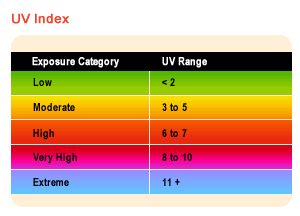Action Steps for Sun Safety
While some exposure to sunlight can be enjoyable, too much can be dangerous. Overexposure to ultraviolet (UV) radiation from the sun can result in a painful sunburn. It can also lead to more serious health problems, including skin cancer, premature aging of the skin, cataracts and other eye damage, and immune system suppression. Children are particularly at risk. This Web page explains simple steps to protect you and your children from overexposure to UV radiation.
Most people are not aware that skin cancer, while largely preventable, is the most common form of cancer in the United States. More than 3.5 million new cases of skin cancer are diagnosed annually. By following some simple steps, you can still enjoy your time in the sun and protect yourself from overexposure. The U.S. Environmental Protection Agency (EPA) recommends these action steps to help you and your family be Sun Safe.
Early detection of melanoma can save your life. A new or changing mole should be evaluated by a dermatologist.

Do NOT Burn
Sunburns significantly increase one's lifetime risk of developing skin cancer, especially for children.

Avoid Sun Tanning and Tanning Beds
UV radiation from tanning beds and the sun causes skin cancer and wrinkling.

Generously Apply Sunscreen
Generously apply about one ounce of sunscreen to cover all exposed skin 15 minutes before going outside. Sunscreen should have a Sun Protection Factor (SPF) of at least 15 and provide broad-spectrum protection from both ultraviolet A (UVA) and ultraviolet B (UVB) rays. Reapply every two hours, even on cloudy days, and after swimming or sweating.

Wear Protective Clothing
Wear protective clothing, such as a long-sleeved shirt, pants, a wide-brimmed hat, and sunglasses, when possible.

Seek Shade
Seek shade when possible, and remember that the sun’s UV rays are strongest between 10 a.m. and 4 p.m.

Use Extra Caution Near Water, Snow and Sand
Water, snow and sand reflect the damaging rays of the sun, which can increase your chance of sunburn.

Check the UV Index
The UV Index provides important information to help you plan your outdoor activities in ways that prevent sun overexposure. The UV Index forecast is issued daily by the National Weather Service and EPA.

Get Vitamin D Safely
Get Vitamin D safely through a diet that includes vitamin supplements and foods fortified with Vitamin D. Don't seek the sun.

